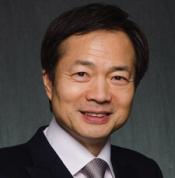"Three-parent baby" claim raises hopes — and ethical concerns
By Sara Reardon,
Nature News
| 09. 28. 2016
A reported world-first in fertility therapy — a baby boy conceived using a controversial technique that mixes DNA from three people — has made headlines across the world. But with no way of verifying the claim because the specialists behind the procedure will not release data until October, some researchers are questioning the ethics of the procedure. In particular, they ask why the US-based team behind the operation chose to carry it out in Mexico, a country with less-clear oversight of human-embryo modification than, for instance, the United Kingdom or the United States.
Researchers at the New Hope Fertility Center in New York City told New Scientist — which broke the news on 27 September — that they had conducted the procedure for a Jordanian couple, and that the baby boy was born in April. The team, led by John Zhang, a physician at the centre, is not due to present details until 19 October, at the American Society for Reproductive Medicine meeting in Salt Lake City, Utah, but it has published an abstract online with sparse information.
According to the abstract...
Related Articles
By Katherine Long, Ben Foldy, and Lingling Wei, The Wall Street Journal | 12.13.2025
Inside a closed Los Angeles courtroom, something wasn’t right.
Clerks working for family court Judge Amy Pellman were reviewing routine surrogacy petitions when they spotted an unusual pattern: the same name, again and again.
A Chinese billionaire was seeking parental...
By Sarah A. Topol, The New York Times Magazine | 12.14.2025
The women in House 3 rarely had a chance to speak to the women in House 5, but when they did, the things they heard scared them. They didn’t actually know where House 5 was, only that it was huge...
By Sarah Kliff, The New York Times | 12.10.2025
Micah Nerio had known since his early 30s that he wanted to be a father, even if he did not have a partner. He spent a decade saving up to pursue surrogacy, an expensive process where he would create embryos...
By Carter Sherman, The Guardian | 12.08.2025
A huge defense policy bill, revealed by US lawmakers on Sunday, does not include a provision that would have provided broad healthcare coverage for in vitro fertilization (IVF) for active-duty members of the military, despite Donald Trump’s pledge...




